The 11 July 1962 should be remembered as the day the world got smaller. Not literally, of course, but metaphorically; it was the day of the first transatlantic satellite communication between Britain and the United States of America.
Racing through the skies, approximately 950km overhead, was the world’s first commercial communications satellite.
Telstar 1 had been launched the day before from Cape Canaveral in Florida. The size of a large beach ball, the satellite was the thin end of a technological wedge because an international consortium of companies had built a string of antenna stations around the globe to receive and transmit the signal. The stations were in the US, Canada, France, Germany, Italy and the UK.
The UK’s station was on Goonhilly Downs, on the Lizard Peninsula in Cornwall. This windswept plain was chosen because it looked out over the Atlantic.
Its excellent view of the sky to the west meant that it could see satellites for longer than other inland locations. And the receiver that the General Post Office (GPO) built there was as large as Telstar was small.
Known as Goonhilly 1 (GHY-1) but nicknamed ‘Arthur’, the dish antenna was almost 26 metres wide and the entire structure weighed 1,100 tonnes.
On 11 July, it started tracking Telstar as the satellite came across the western horizon heading east. Taking just two hours and 37 minutes to circumnavigate the globe, the satellite had been placed in an elliptical orbit so it spent as long as possible over the Atlantic.
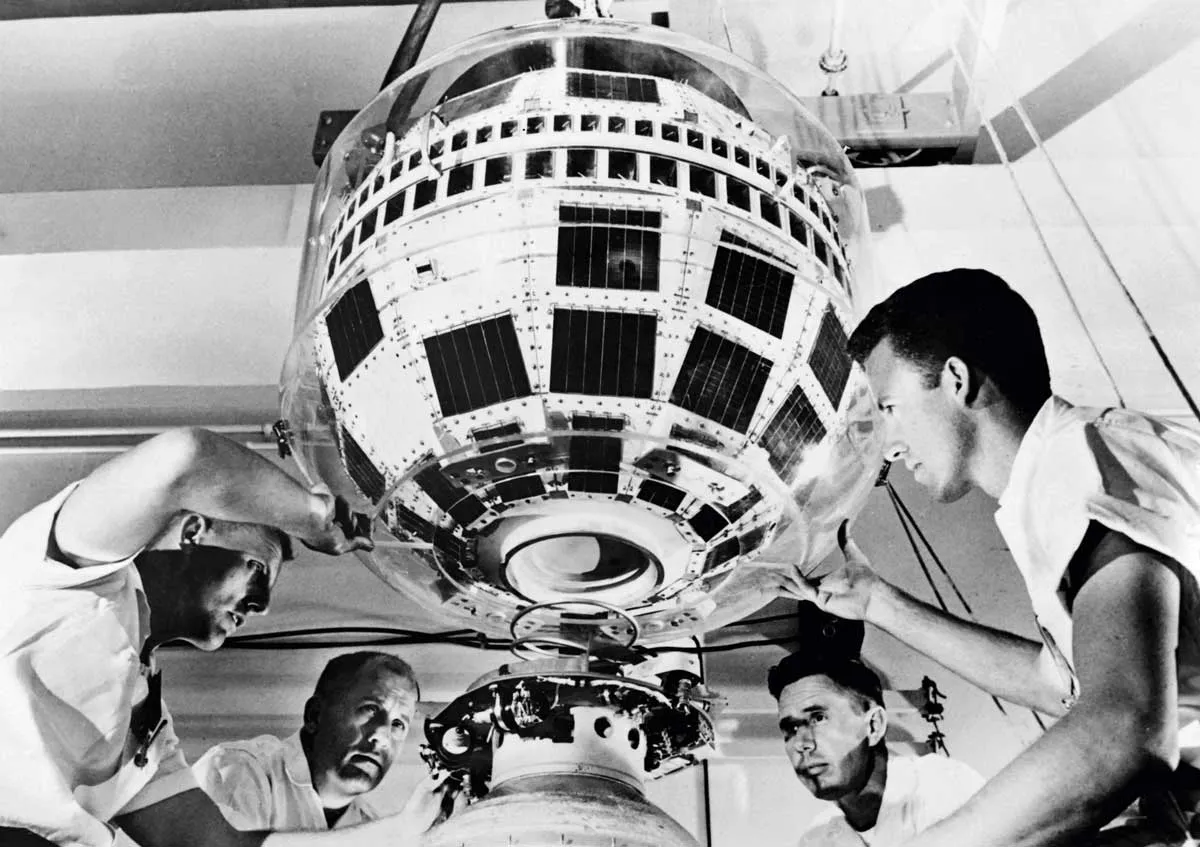
Even so, only around half an hour of transmission time was possible before it disappeared from the skies, and that meant the giant GHY-1 antenna had to follow Telstar precisely, even when it was moving at around three times the apparent diameter of the full Moon every second.
Just one day after launch, Telstar was on its 15th orbit of Earth, when it beamed pictures from the US down to GHY-1.
On its next orbit, Goonhilly transmitted a live television broadcast from its control room, featuring BBC commentator Raymond Baxter and Captain CF Booth, deputy engineer-in-chief of the GPO.
Making history
During the following days and weeks, increasingly complex signals were traded between Telstar and Goonhilly, including the first fax transmission of a picture and the first colour television images. But it was something even more historic that captured Goonhilly’s current CEO Ian Jones’s attention.
Apollo 11 landed on the Moon in 1969 and GHY-1 helped receive the television pictures of astronauts Neil Armstrong and Buzz Aldrin walking on the lunar surface.
“Being a child of the 60s, space and Apollo were exciting, inspirational things, and I can’t remember not knowing the name Goonhilly. It’s a key part of the UK’s history,” he says.
Throughout its ownership by the GPO, which later became British Telecom (BT), the station developed into a hub for global telecommunications, adding more antennas along the way.
Read more:
- The UK’s Goonhilly Earth Station has started tracking the path of NASA’s Artemis 1 Moon rocket
- Who will design next lunar lander?
- In pictures: NASA's Artemis 1 heads for the Moon
The largest of these is the 32-metre Goonhilly 6 (GHY-6) dish, also known as Merlin. Completed in 1985, its first job was to relay the famous Live Aid concert to 100 countries across the world.
It even earned a Blue Peter badge that same year, although, sadly, the weather has taken its toll on the badge’s plaque.
But in the decades that followed, the world changed. The cost of owning and operating satellites began to fall, and companies like Sky TV were pioneering satellite-to-home transmission, with consumers needing just a small dish on their homes to receive the signals from space.
As a result, a huge satellite station like Goonhilly began to look like an expensive relic from a bygone age. BT closed the station in 2008, and a few years later scheduled it for demolition.
AI in space
Goonhilly is pioneering a Space Artificial Intelligence Institute. Satellites are now capable of producing so much data that just sorting through it, let alone analysing it in a reasonable time, is stretching human capacity to the limit.
To remain close to the concept of real-time data, analysis will require machine learning and artificial intelligence – computers capable of interpreting those signals collected by satellites and space missions in real time, just like our brain does with the things we sense.
Goonhilly space scientist Olivia Smedley has been investigating the use of AI techniques on satellite data, to map trees across Cornwall.
She sees a strong crossover with the traditional work of the Earth Station. “There are a lot of parallels between the mathematics used for digital signal processing, and the kind needed for how AI works. So it’s an interesting avenue to be exploring,” she says.
A new lease of life
That was the catalyst for Jones. He realised that, just as Goonhilly had been used to pioneer satellite-based broadcasting, there could be a new role for it pioneering commercial deep-space communications.
In 2014, he assembled a team to explore that possibility, set up a company called Goonhilly Earth Station Ltd (GES), negotiated with BT to take over the site and lease the antennas, and turned Goonhilly into the world’s first privately owned deep-space communications network.
“Communications is one of those things that quite often gets forgotten,” says Jones, pointing out that as more spacecraft are being built, and as more spacecraft are surviving for longer in space, there’s often a logjam of missions wanting to communicate with Earth.
This results in the traditional deep-space networks built by NASA and ESA being heavily over-subscribed. Add to that the private companies entering the launch market and the need for more ground stations becomes obvious.
GES worked with ESA and NASA to convert GHY-6 into a deep-space antenna capable of receiving data from their spacecraft and transmitting commands to them. Now, GHY-6 routinely communicates with the ESA missions Gaia, Integral, Cluster and Mars Express.
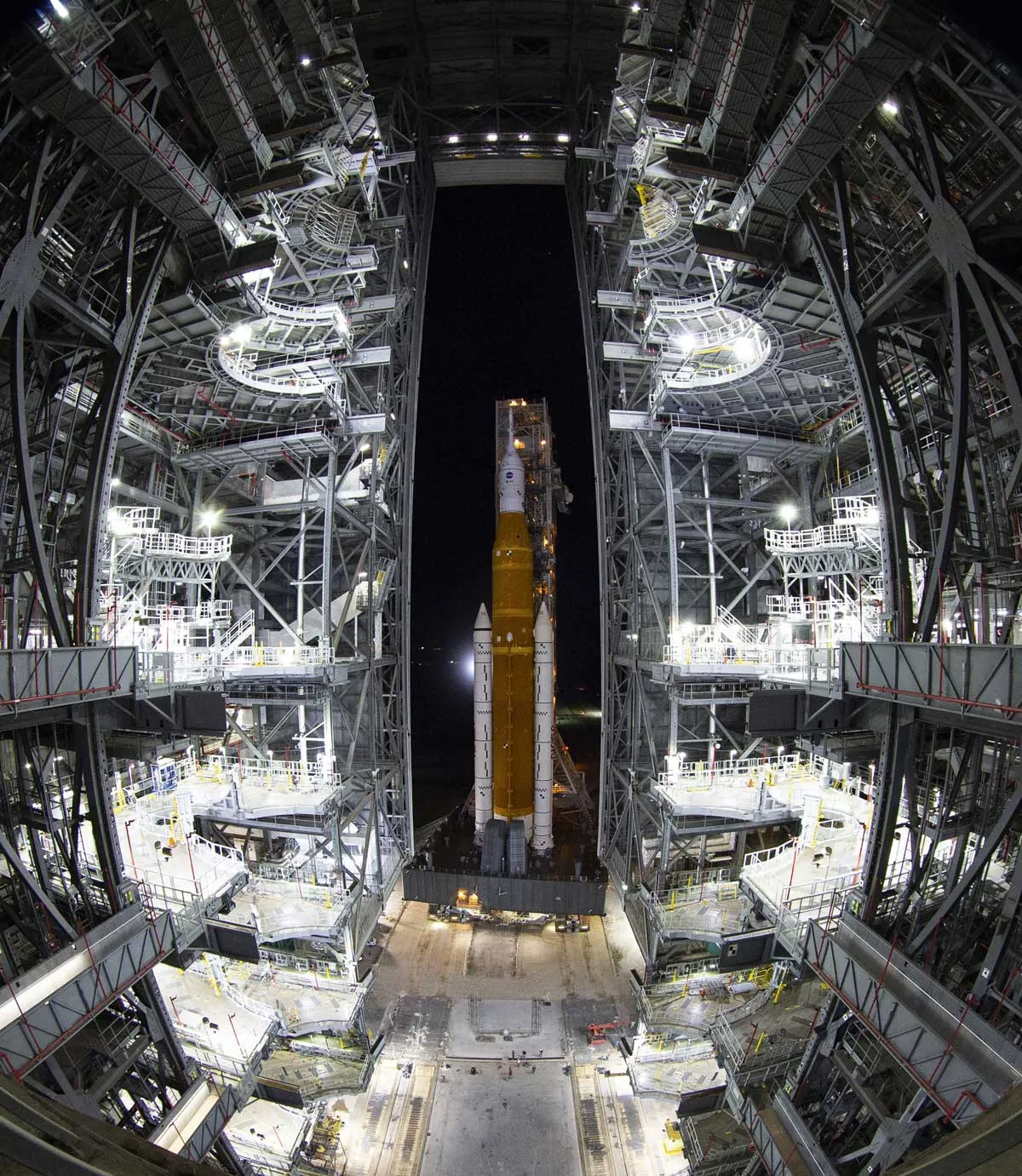
“It’s been super exciting to actually be downlinking signals from Mars Express,” says Goonhilly space scientist Olivia Smedley, who was part of the team that worked to upgrade the antenna.
“Seeing images of Mars that have come through the dish here at Goonhilly is cool.”
In the summer of 2022, NASA asked GES for its help in tracking Artemis 1. This mission is the first uncrewed test of the Orion space capsule that will be used to help return astronauts to the Moon.
Smedley and colleagues started well before dawn on Orion’s launch day to set up GHY6 with the correct frequencies and data rates to be ready for whenever the Americans pressed ‘go’.
“It was very exciting to see the signals from Orion only a few hours after it launched,” she says. One of the jobs for GES was to establish contact with 6 of the 10 small CubeSat satellites that were hitching a ride on Artemis 1.
Matt Cosby, director of space engineering at Goonhilly, says the station is probably in touch with between 10 and 20 spacecraft every day.
Not all of these are deep-space missions, many are communications satellites around Earth that don’t need the big 30-metre dishes. So, GES has a number of smaller five-metre dishes, many of them clustered together in an area of the site referred to as ‘the antenna farm’.
In total, there are around 40 antennas on the 160-acre site.
Goonhilly: what’s there?
The Goonhilly Earth Station covers a 160-acre site and features around 40 antennas. Most are smaller, five-metre-class dishes. Not all of Goonhilly’s large antennas have survived over the years, but three still exist. Of these, the original Goonhilly 1 (GHY-1) is now largely retired.
GHY-6 is a dedicated deep-space communications antenna, capable of sending and receiving information to and from distant spacecraft. Meanwhile, GHY-3 is a radio telescope that can also be used for detecting radar signals reflected back off pieces of space junk.
Multipurpose dishes
Beyond deep-space communications, there are a number of other uses for the big dishes.
For example, Goonhilly 3 (GHY-3) has been equipped with a cryogenic unit that cools the receiver to -265°C, just 8°C above absolute zero.
This makes it highly sensitive to weak signals, so it can be used for radio astronomy, searching out celestial objects such as galaxies containing active supermassive black holes in their cores, or the remnants of exploded stars.
Sitting a radio telescope next to a deep-space communications dish went against the orthodoxy.
“Astronomers use radio telescopes to listen and they’re listening intently. The comms people are just shouting at spacecraft, so it was assumed that you couldn’t have them working together.
"But there are a lot of techniques in radio astronomy that can be used for deep-space communication, so learning from each other is quite useful,” says Cosby.
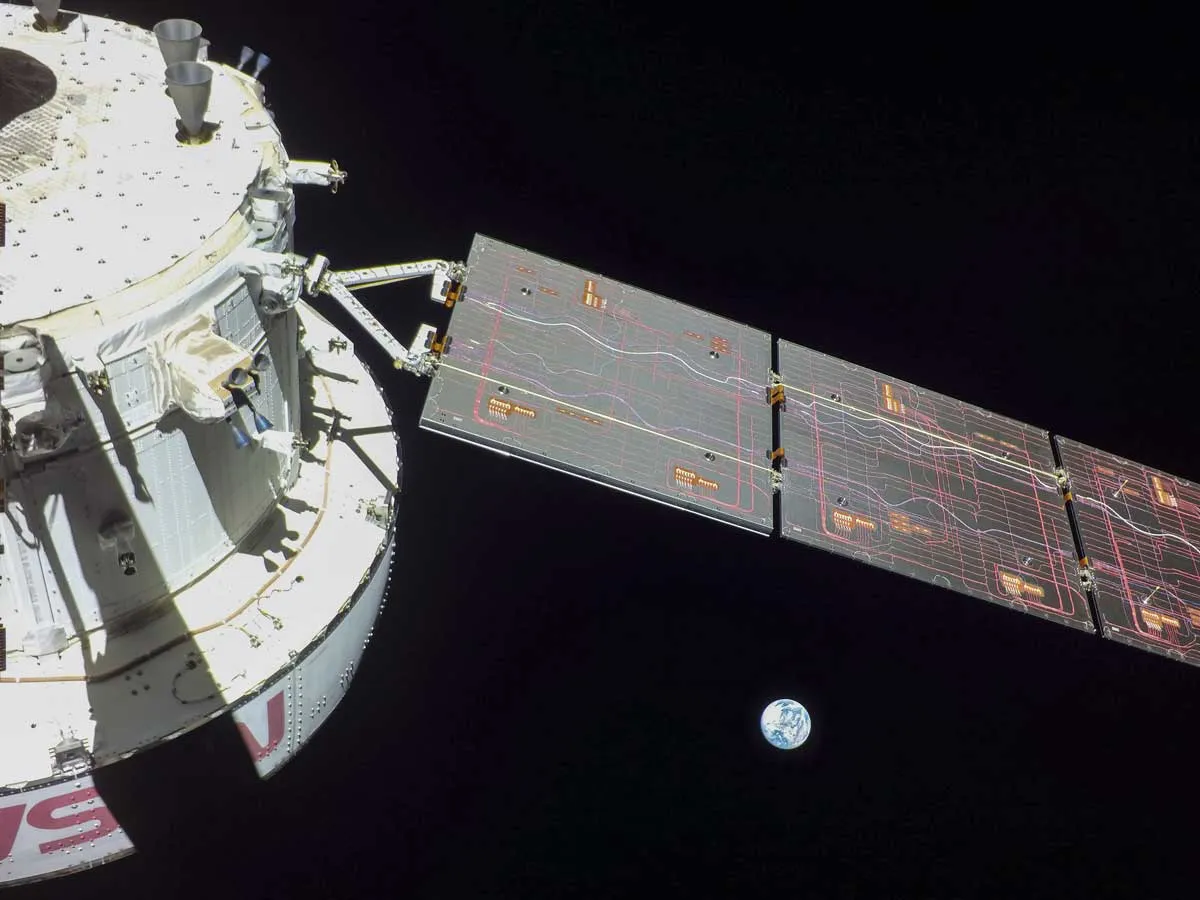
Having such a sensitive receiver also means that they can listen for faint radar reflections too. This means that GHY-3 can be used to track space debris by detecting radar signals bouncing off the junk up there.
Earlier this year, GES also began collaborating with companies Inmarsat and GMV Innovative Solutions to develop a satellite signal that could be beamed to GPS users to improve the system’s accuracy.
Known as the UK Space-Based Augmentation System (UKSBAS), it would boost the GPS signal’s precision from several metres down to just a few centimetres.
More history to make
Satellite and deep-space communications are only set to increase in importance in the UK.
In 2023, Richard Branson’s Virgin Orbit company will perform the first satellite launch from British soil.
A converted Boeing 747 plane will take off from Newquay’s Spaceport Cornwall runway, carrying a rocket strapped to one of its wings. Once at an altitude of 10,668m (35,000ft), the aircraft will release the rocket, which will boost into orbit and deploy its satellites.
“We’ve been involved in the Spaceport Cornwall project since its inception,” says Cosby.“And we’re going to be tracking the rocket as it goes off.”
GES will then operate one of the satellites. The satellite, known as Amber-1, will be used to gather marine intelligence to help police activities such as piracy, illegal fishing and trafficking.
And the future holds even more excitement.
“I think, after a 50-year hiatus, there is renewed interest in going to the Moon,” says Jones.
He envisions expanding Goonhilly by building more facilities and becoming the communications provider for many of the missions that will go to the Moon.
For Jones, who took his childhood inspiration from the Apollo images beamed back through Goonhilly, it will be like coming full circle. And, it seems that there’s a lot more space history for the Earth station to make.
Read more:
- The next giant leaps: The UK missions getting us to the Moon
- Move over, Mars: why we should look further afield for future human colonies
The mini-satellites tracked by Goonhilly
Satellites can now be as small as a shoe box. Ten of these mini-satellites, known as CubeSats, were launched on the Artemis 1 mission in late 2022. Goonhilly is tracking these six:
NEAScout
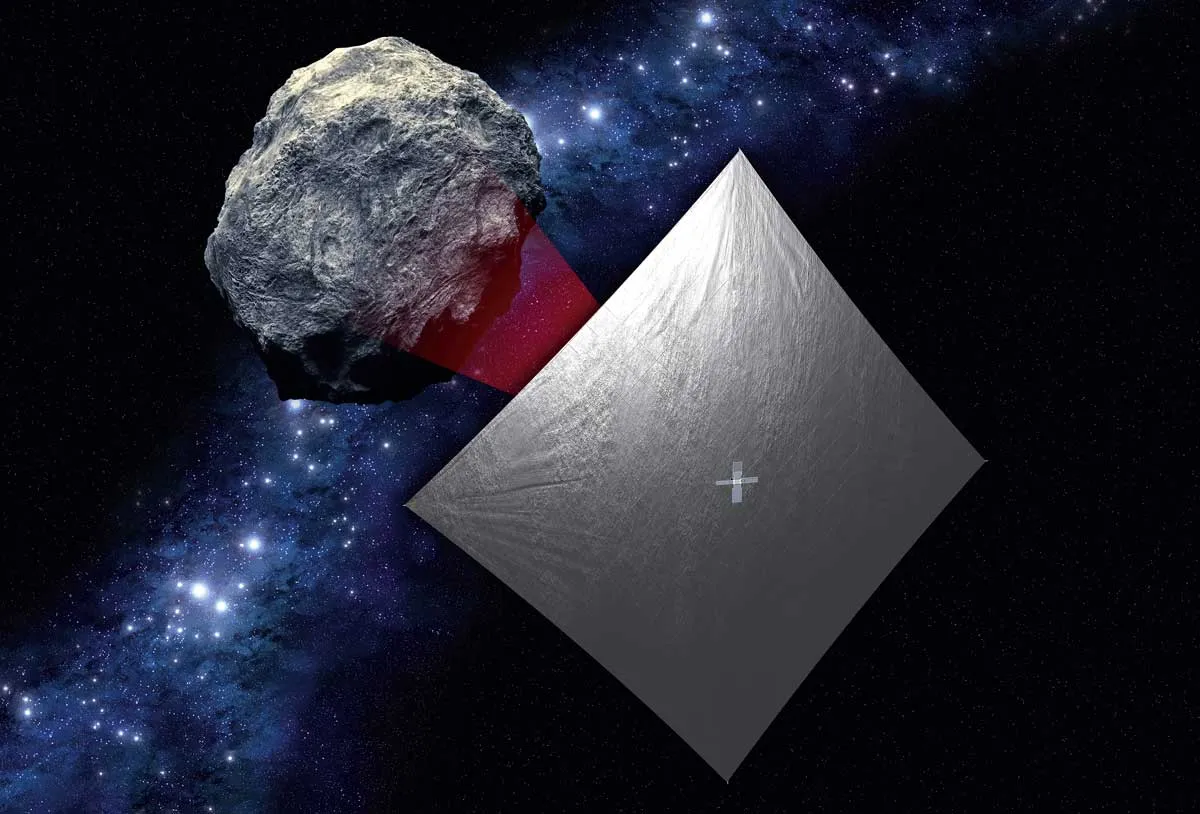
The Near-Earth Asteroid Scout (NEAScout) CubeSat has been developed by NASA. It will unfurl an 86m2 solar sail that will use the pressure of sunlight to propel the satellite to a small asteroid and reconnoitre its surface. Unfortunately, NEAScout did not make contact following its deployment. Photo by NASA/JPL
BioSentinel
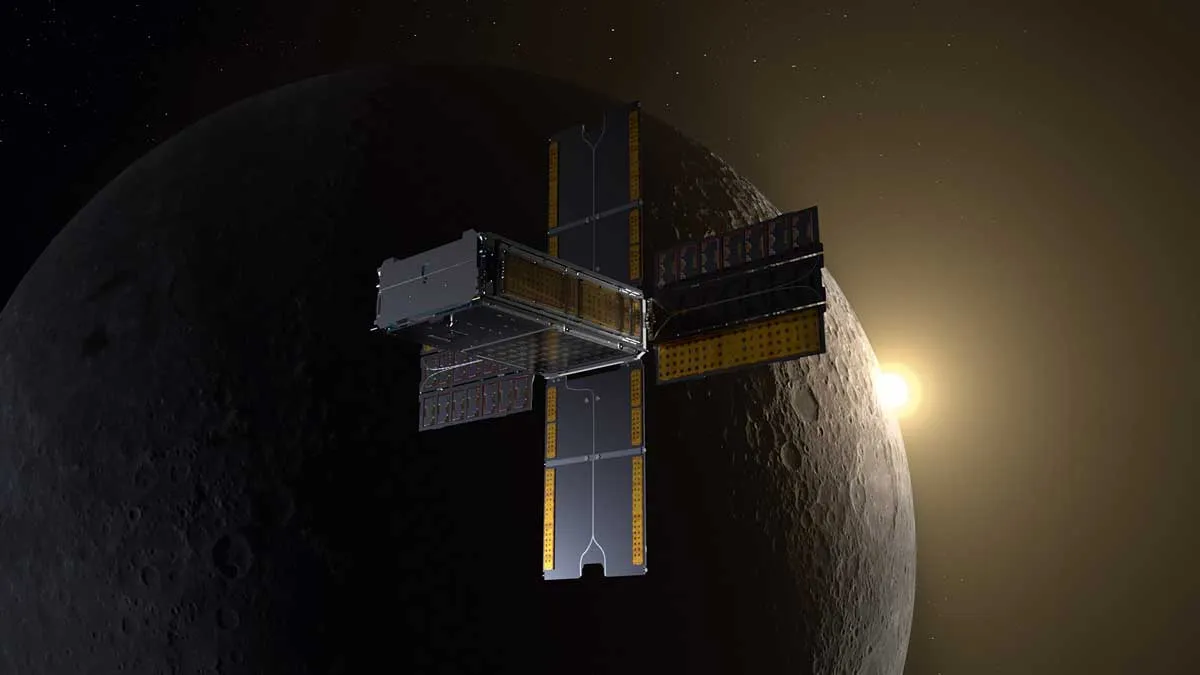
Designed by NASA Ames Research Centre to spend 18 months studying the way radiation in space damages the DNA of living yeast cells. Photo by NASA/Daniel Rutter
LunaH-map
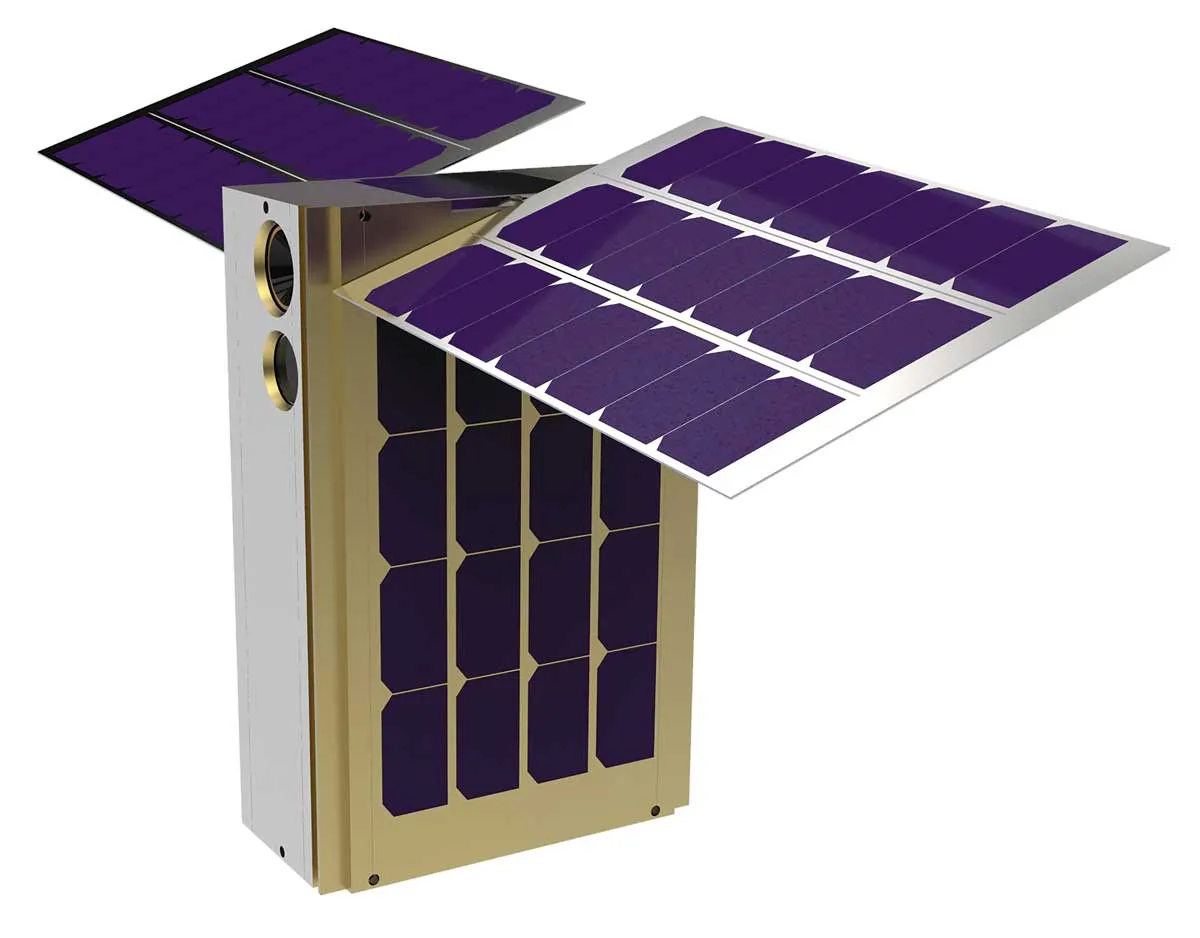
Designed by Arizona State University to investigate the lunar south pole for hydrogen deposits associated with water. Photo by NASA
ArgoMoon
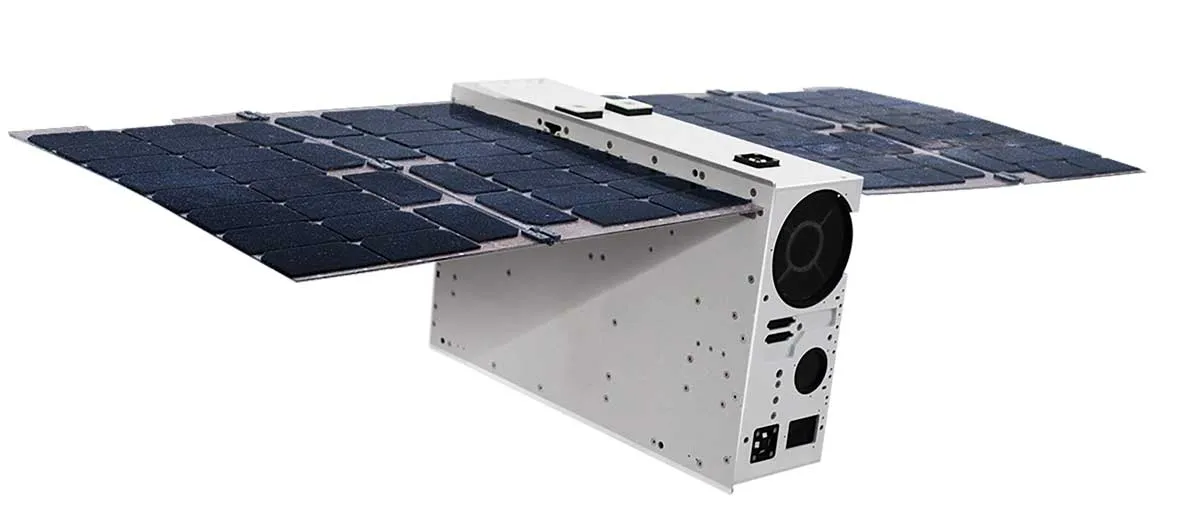
This was designed by the Italian Space Agency to autonomously record images of the rocket stage that propels Orion to the Moon and the deployment of the other CubeSats. Photo by NASA
CuSP
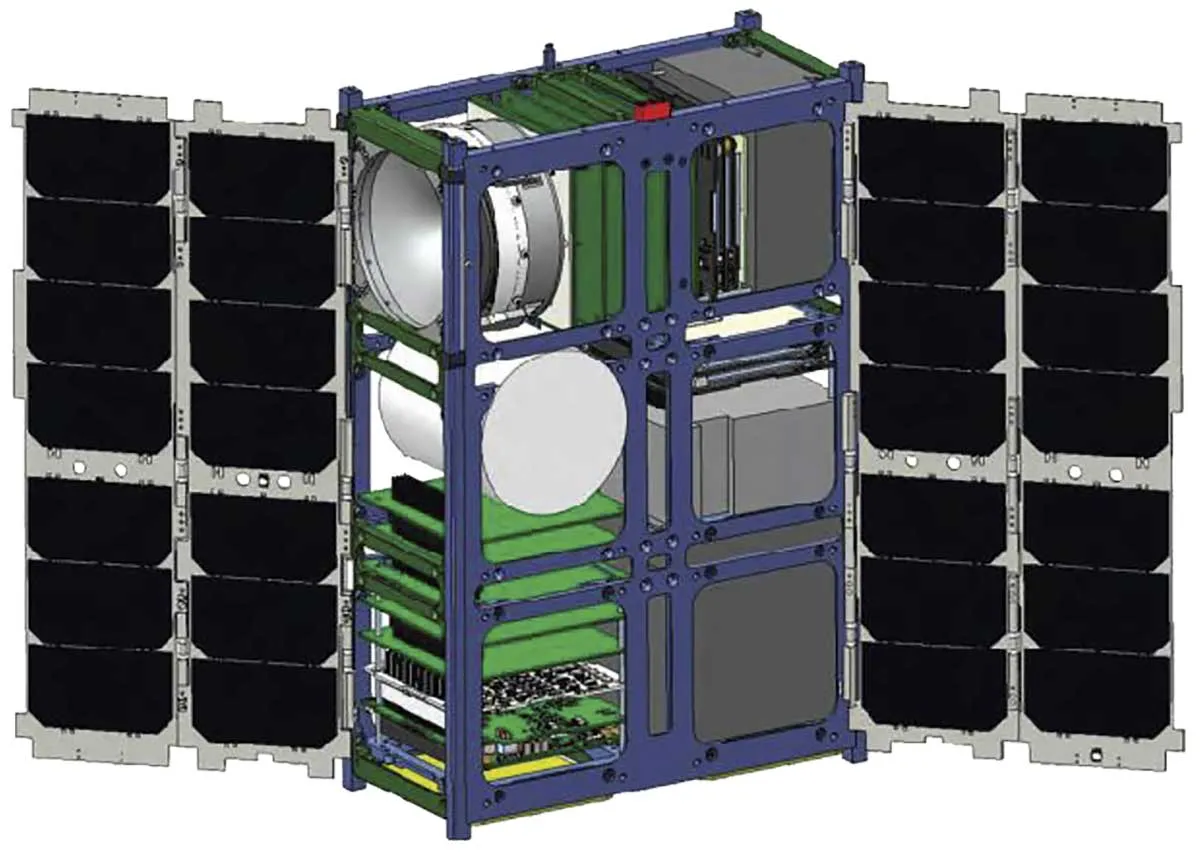
The CubeSat for Solar Particles (CuSP) was designed by the SouthWest Research Institute, Texas, to study the radiation emanating from the Sun, known as space weather, which can affect electronics and living organisms. Photo by NASA
Lunar IceCube
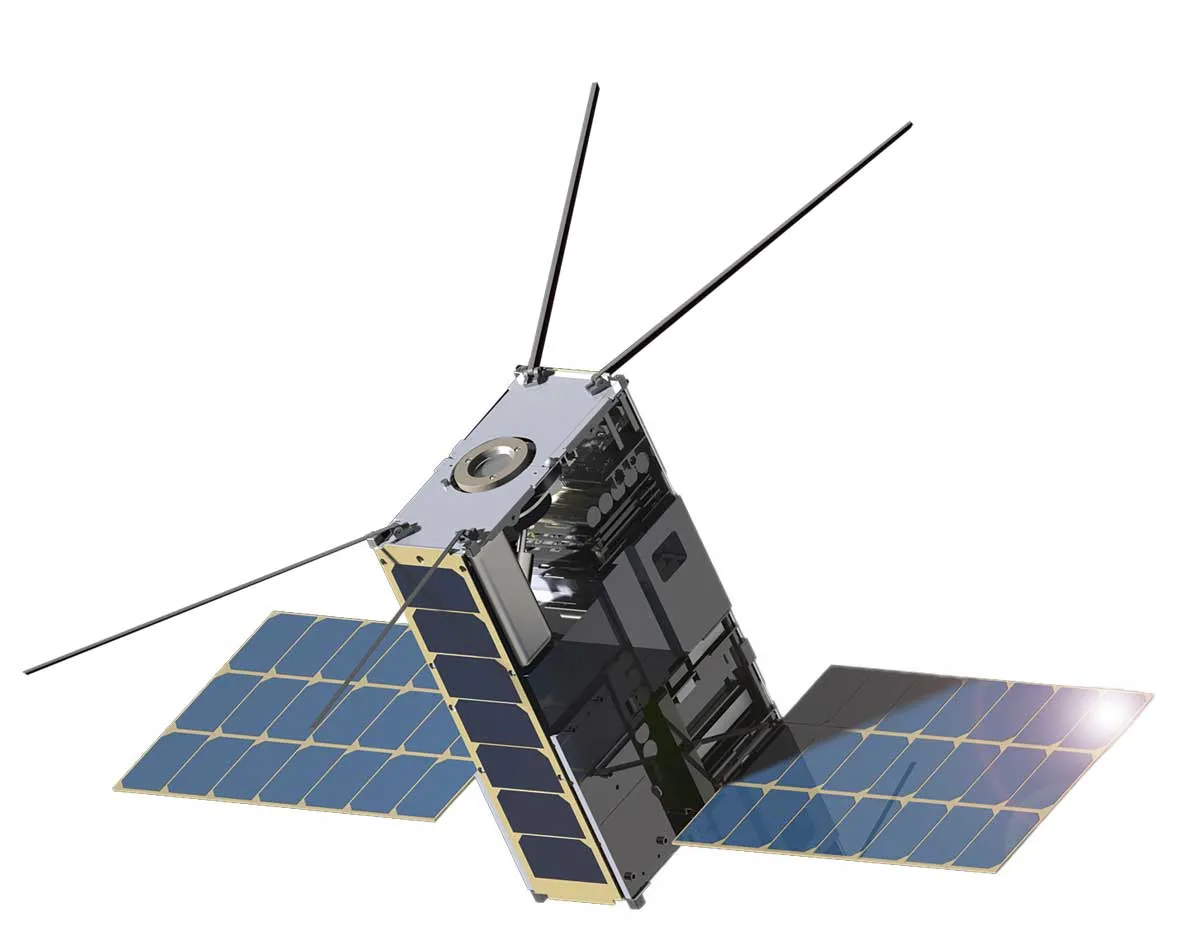
Designed by NASA’s Goddard Space Flight Center, the Busek Company and others to prospect the Moon for resources needed to build a lunar base. Photo by Recentcontributor2000/Wikipedia
Read more:
